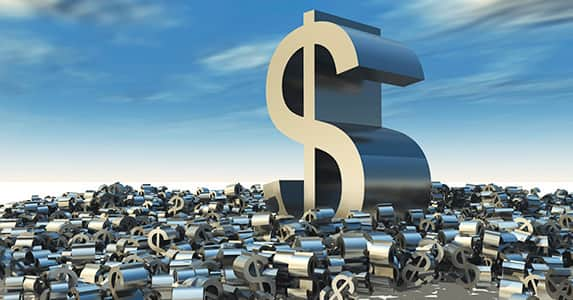
CD Calculator
Feb. 07, 2025
Use our CD calculator to estimate how much you could earn from a certificate of deposit. Enter your initial deposit, CD term, and APY to see your potential earnings on your CD at maturity.
Interest earned by year 5: | ||
| Your earnings | $1677.40 | |
| National Average | $481.52 | |
| Total interest earned = $1677.40 | ||
Our partners regularly offer APYs that are 2-4x higher than the national average – so you can grow your savings faster.

Share your feedback
We want to hear from you
At Bankrate, we aim to provide reliable personal finance information. We value your feedback.
Write a reviewHow to calculate your CD earnings
CDs come with a fixed annual percentage yield (APY) that makes it easier to calculate exactly how much interest you’ll earn when your CD matures. CDs typically offer higher interest rates than other types of deposit accounts, like savings accounts.
Keep in mind that an early withdrawal penalty can eat into your earnings if you withdraw your funds prematurely before the CD’s term matures.
Follow the steps below to use the Bankrate CD calculator to see how much interest you’ll earn over time:
- Determine how much money you’d like to put in a CD. CDs generally have early withdrawal penalties if you withdraw money before the term ends. So choose your term carefully.
- Deposit the amount you wish to sock away as your initial deposit.
- Plug in the number of months – or years – of the CD’s term into the calculator.
- Finally, add the CD’s APY. Because APY includes the effects of compounding, you don’t need to worry about putting the frequency of compounding.
How much interest will I earn on a CD?
The amount of interest you'll earn on a CD depends on several key factors:
- Initial deposit: A high deposit means you'll earn more interest
- APY: The higher the APY, the more interest you'll earn
- Term length: Longer terms typically offer higher rates
- Compounding frequency: More frequent compounding (daily vs. monthly) results in slightly higher earnings
For example, if you invest $10,000 in a 1-year CD with a 5% APY and monthly compounding, you'd earn approximately $512 in interest. Try different scenarios using our calculator above to estimate your potential earnings.
CD terms to know
- Initial deposit
- The starting balance for your CD.
- Term length
- The amount of time you need to hold your CD. You’ll generally earn a fixed APY during that term.
- Interest rate
- The base rate that your deposit earns money.
- Annual percentage yield (APY)*
- The percentage that indicates how much interest a bank account earns in one year.
- Compounding
- Interest you earn is added to your balance. And that interest earns interest.
- Early withdrawal penalty
- The penalty you’ll incur if you withdraw from your CD before the term ends.
*Formula: APY = 100 [ ( 1 + Interest / Principal ) ( 365 / Days in term ) − 1 ]
What is a good APY on a CD?
In this current high interest rate environment, you should be able to get a CD APY that’s at least twice that of the national average. For instance, the one-year CD national average is 2.01 percent APY. Currently, the highest-yielding rate among one-year CDs that are widely available at banks and credit unions is 4.45.
How are CDs different from savings accounts and money market accounts?
A CD generally pays interest at a fixed rate of return and a fixed period of time, or term, that you’re required to keep your money in. Withdrawals before the term ends will generally result in an early withdrawal penalty.
High-yield savings and money market accounts aren’t timed accounts, and generally you can withdraw your money any time. But these deposit accounts might have restrictions on the number of certain withdrawals or transfers you can make from a savings deposit account during your statement cycle. A bank might also charge a fee for excessive withdrawals or transfers, and it could close your account for making excessive withdrawals/transfers from a savings deposit account.
Tips to maximize your CD earnings
To maximize the interest you could earn on a CD, compare rates across multiple banks and credit unions. Online banks typically offer higher rates than traditional brick-and-mortar banks, sometimes by a full percentage point or more.
Creating a CD ladder allows you to take advantage of higher rates while maintaining some access to your money. With this strategy, you divide your money among CDs with different term lengths. For example, you might split $25,000 across five CDs ranging from one to five years. As each CD matures, you can either withdraw the money or reinvest it at current rates.
Timing the opening of new CDs can also increase your returns. When interest rates are expected to fall, opening a longer-term CD allows you to lock in a higher rate. When rates are likely to rise, shorter terms might be a better choice.

